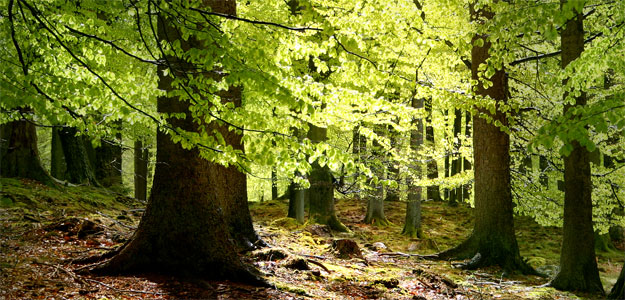
Regreening the Emerald Planet
 As the United States prepares to tackle global warming with a wave of scientific and technological expertise, the need
to understand its effect on our planet becomes ever more pressing. Could the very landscape that it threatens to alter hold the
key to stopping global warming? (Photo Courtesy of Malene Thyssen)
As the United States prepares to tackle global warming with a wave of scientific and technological expertise, the need
to understand its effect on our planet becomes ever more pressing. Could the very landscape that it threatens to alter hold the
key to stopping global warming? (Photo Courtesy of Malene Thyssen)
By Dr. Thomas Lovejoy
At long last the United States is about to engage seriously on climate change. Indeed it is overly late. Greenhouse gas emissions have exceeded the worst case scenario of the Intergovernmental Panel for Climate Change (IPCC). Already major changes are happening as a consequence in the Arctic. Almost everywhere one looks the natural world is changing too: changing the timing of life cycles and changing where they occur. Nature is on the move all over the planet.
The United Nations Framework Convention on Climate Change has specific language about avoiding dangerous human interference in the climate system with consequences for economies, agriculture and ecosytems. Climate Scientist Jim Hansen feels that the danger zone for concentrations of carbon dioxide (the principal green house gas) is at 350 parts per million (ppm) and above. That is very sobering because pre-industrial levels were 280 ppm and we are currently at 390 ppm.
A closer look at the biology of the planet confirms the judgement that going above 350 pmm is dangerous. Beyond the changes noted above, there are already significant threshold changes in ecosystems. In the oceans, modest increase in temperature causes the fundamental coral animal - alga partnership to break down, producing bleaching events and undercutting the beautiful diverse and productive coral reef ecosystems. On land, coniferous forests in North America, in particular, are suffering massive tree mortality because native bark beetles- which consume trees at a rapid rate- survive in larger numbers with warmer winters and breed another generation in the longer summers.
Those changes are happening with a mere 3/4 of a degree Celsius increase in average global temperature. An additional half of degree will automatically occur as heat is trapped by the current levels of CO2. The notion that above two degrees is the danger zone is clearly wrong. On top of that, elevated CO2 levels in the atmosphere are causing the oceans to become more acid with dire consequences for myriad forms of life that depend on building calcium carbonate skeletons.
Clearly, a look at the biological fabric of the planet makes the climate change agenda even more urgent. We need to change the energy base of society on a crash basis to limit the amount of climate change ("climate disruption" as the President's Science Advisor John Holdren correctly describes it).
Ideally we should not only limit the amount of climate change by changing emissions, we should remove CO2 from the atmosphere to reduce the peak amount of climate change. That could be a challenge since a molecule of CO2 stays in the atmosphere a hundred to a thousand years.
The only way we currently have of removing CO2 from the atmosphere more rapidly is using biology. Terrestrial ecosystems have lost 200 to 250 billion tons of carbon in the last three centuries. A significant part of that could be recovered and removed from the atmosphere by restoring terrestrial ecosystems on a planetary scale: reforestation, restoring degraded grazing lands, modifying agriculture to build up carbon in the soils. Restored ecosystems have the additional advantage of being more resilient in the face of the climate change that cannot be avoided.
So what is being proposed is regreening the emerald planet, or in other words, using the living planet to make the planet more habitable for ourselves and other forms of life. Yes, it is planetary engineering, but in a fashion consistent with the history of life on earth, and without any adverse environmental consequences. The biosphere can help resucue us from our atmospheric folly.
Dr. Thomas Lovejoy is the chief biodiversity adviser to the World Bank and president of the Heinz Center. He founded the PBS program Nature, as well as coining the term biological diversity in 1980 and introducing the concept of debt-for-nature swaps.


